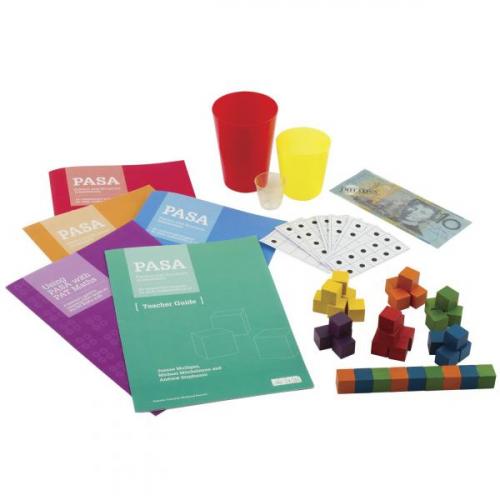
AUTHORS: Joanne Mulligan, Michael Mitchelmore and Andrew Stephanou
Pattern and Structure Assessment (PASA) is an innovative way of investigating young children’s understanding of mathematics. PASA seeks to find out how children think about mathematical ideas and underlying tasks, rather than focusing on what mathematics children can and cannot do. By knowing how children approach tasks, teachers can plan and scaffold individual learning experiences. PASA consists of three one-on-one assessments designed for children in the first three years of formal schooling (Foundation to Year 2). Each PASA assessment consists of approximately 15 tasks, covering a wide variety of ideas that underlie strands of the Australian Curriculum: Foundation – Year 2 Mathematics.
KEY FEATURES:
• Provides information on the strengths and weaknesses of children at either end of the ability range.
• Scale scores allow teachers to compare results regardless of the year level and the specific booklet completed.
• A common scale for the three assessments allows teachers to track progress over time.
BENEFITS:
• Provides in-depth diagnostic information about a child’s mathematical thinking.
• Allows teachers to plan and scaffold individual learning.
The PASA Specimen Set includes:
- PASA Teacher Guide (with USB)
- 1 of Response Booklet F
- 1 of Response Booklet 1
- 1 of Response Booklet 2
- Assessment Materials Kit
The PASA Teacher Guide includes excel scoring spreadsheets that are provided on USB. Using PASA with Pat Maths is supplied as a PDF file and is also supplied on the USB.
Pattern and Structure Mathematics Awareness Program (PASMAP) Books
The Pattern and Structure Mathematical Awareness Program (PASMAP) is a network of related learning experiences developed for children in the first three years of formal schooling (Foundation - Year 2).
PASMAP focuses on developing children's awareness of the patterns and structures that underlie the concepts and processes common to all the early Australian Curriculum: Mathematics strands.
It's organised as a series of learning sequences, each of which consists of a number of learning experiences focussed on a particular aspect of one of the early mathematics structures. These learning sequences are grouped into ten learning pathways, each one a journey through a set of related learning sequences.
PASMAP can be used in conjunction with ACER's Pattern and Structure Assessment (PASA), which measures awareness of mathematical pattern and structure. By testing children with PASA, teachers can use their results to help select the most effective PASMAP learning sequences.




